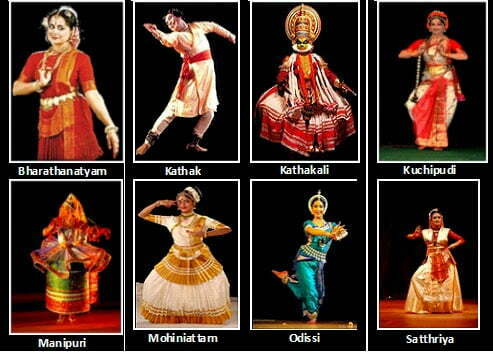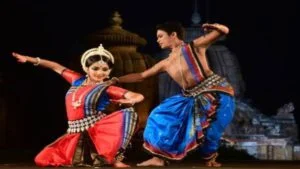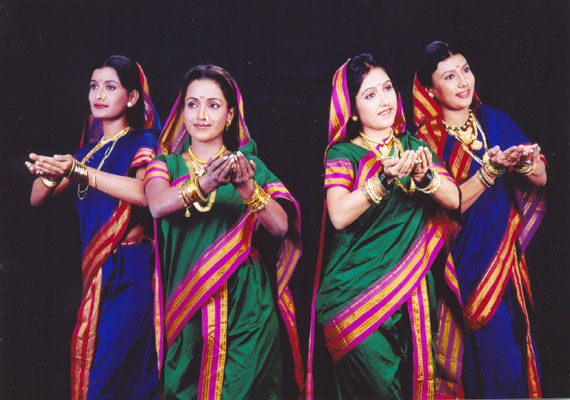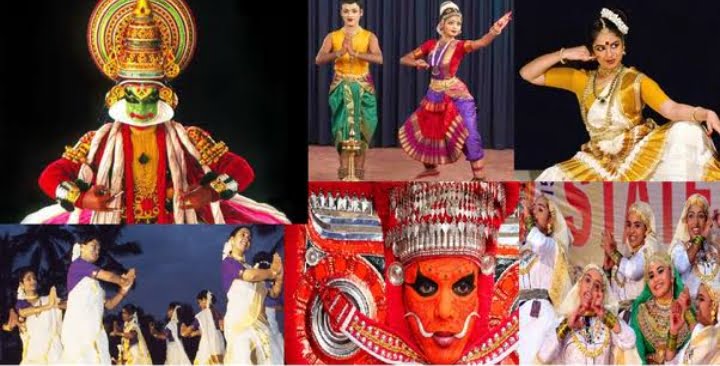The first thing that comes to mind when someone says ” Gujarat ” is colour, vibrancy, culture, and of course, its popular folk dances. People in Gujarat love to celebrate every big day with incredible grandeur.
Gujarat has gained the title of ‘Land of Festivals‘ due to a large number of fairs and festivals hosted each year. Traditional dance and music performances complement the festivities on these days.
Gujarat has a rich cultural history of arts and culture, which includes various classical songs, dance, and theatrical art forms. Researchers believe that the performing arts tradition goes back to Lord Krishna’s time since He spent His early days in Gokul.
Gujarati folk dances are an important element of Gujarat’s tradition-rich culture. In this article, we will discuss the Popular Folk Dances of Gujarat.
Facts About Folk Dances of Gujarat
- Garba is well-known in the United States, and each year, over 20 universities worldwide host Garba dance contests.
- As we know it now, Garba is a hybrid of Dandiya Raas and Garba. The combination of the two has grown very popular among the world’s youth.
- Garba performers wear a Kediyu, a short round Kurta with Kafni Pajamas and a Pagdi on their heads, as well as Mojri or Negras.
- Bright colors and beautiful embroidered define Chaniya Cholis. Silver or Black Metal Necklaces, Big Earrings, Kamarband, Bajuband, Maang Tikka, and Juttis, complete the look.
- Chaniya is a traditional women’s clothing. The Choli is a traditional Gujarati three-piece dress that consists of a blouse, a long flared skirt, and an embroidered dupatta.
- Another interpretation of Garba’s symbolic shape reflects the cycle of life, which flows from life to death to rebirth, as the dancers walk around in circles performing circular gestures with their hands and feet.
- Around Garbha Deep, people perform Garba which symbolizes life in the mother’s womb. This dance style honours Goddess Durga or Amba’s majesty and might.
- During Navratri, people perform a Gujarati dance called Garba. Garbi, Garbha, and Garbha Deep are other names for it.
Famous Folk Dances of Gujarat
Garba

Garba is a popular Gujarati Folk dance. During the Navratri celebration, people usually perform this dance. Garbha is derived from a Sanskrit word that means “womb”. Garbi, Garbha, and Garbha Deep are some other popular names of Garba. The word ‘Deep’ in Garbha Deep signifies earthen lights.
During Garba, dancers form a circle around the main flame and revolve around it. The Goddess of Power is shown by the center light, which does not change throughout time.
Garba is also well-known in the United States. Each year, nearly 20 colleges across the globe conduct Garba dance tournaments.
Garba held by the Indian Sub-Continental Club at the University of California, is one of the most popular contests among them.
Dandiya
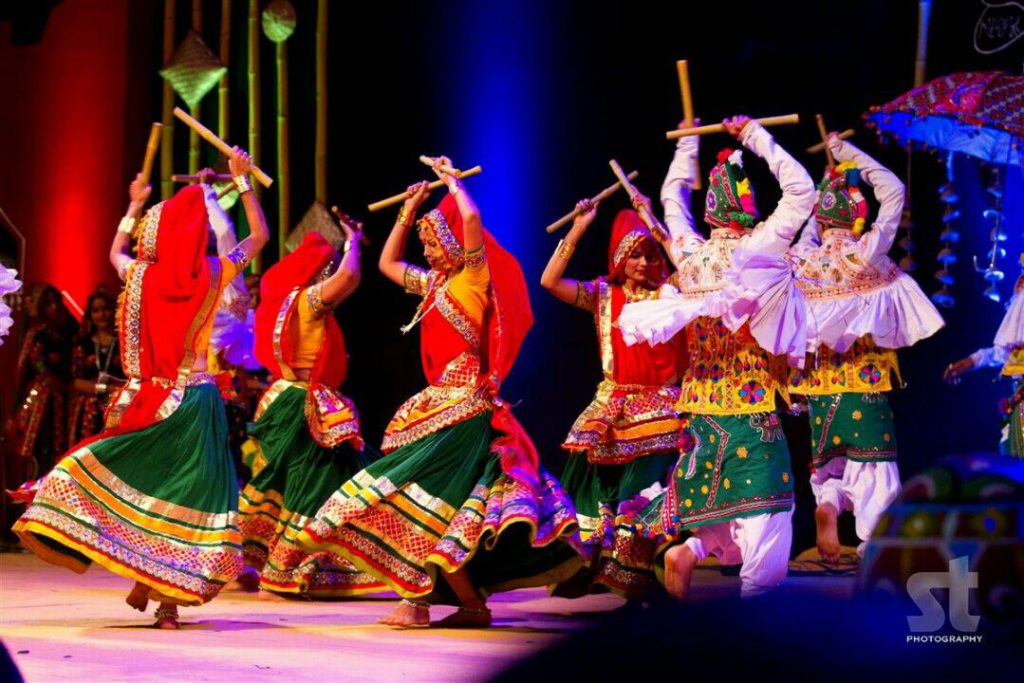
Dandiya which is also known as the stick dance is one of Gujarat’s most popular folk dances. This Beautiful dance is usually performed in groups and in a circular motion with measured steps. Dandiya is also known as “The Sword Dance” because the multi-colored sticks used throughout the dance symbolize Goddess Durga’s sword.
Only women perform Garba. However, both men and women play dandiya. Dandiya is mostly performed by ladies in an elegant and rhythmic style, although when performed in couples, males also participate. Women usually dress in traditional Gujarati garbs, such as ghagras, cholis, and bandhani dupattas. Boys and men wear kafni style pyjamas with a Ghagra – a kind of short round kurta – above the knees and pagadi on the head with bandhini dupatta, kada, and mojiris.
Bhavai
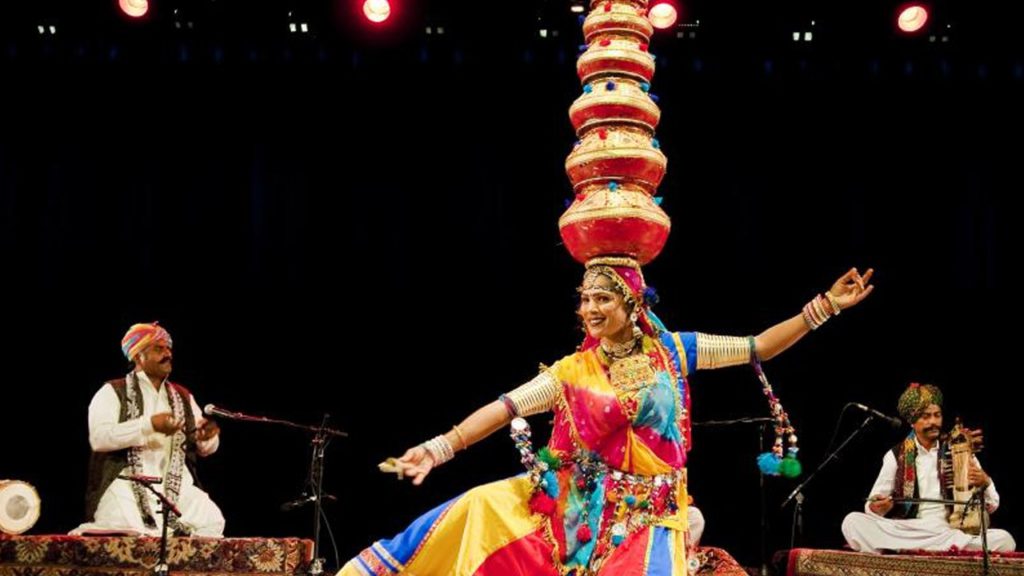
Bhavai is one of Rajasthan’s traditional folk dances. This is a very difficult dance style that should only be performed by professionals. While dancing professional female dancers carry 8 to 9 clay pitchers on their head. These skilled dancers balance a number of clay pots throughout this nail-biting, energetic dance, then swing with the soles of their feet placed on the rim of a brass thali or at the edge of a bare blade, and the top of a glass (plate).
This unique dance style is said to have originated in Gujarat, but it was quickly adopted and changed by local tribal men and women, giving it a distinct Rajasthani flavor. This ancient folk dance was inspired by the women of Rajasthan’s Jat, Bhil, Raigar, Meena, Kumhar, and Kalbelia clans’ exceptional ability and capacity to carry a lot of pots of water In the desert,for a long distance.
Timpani
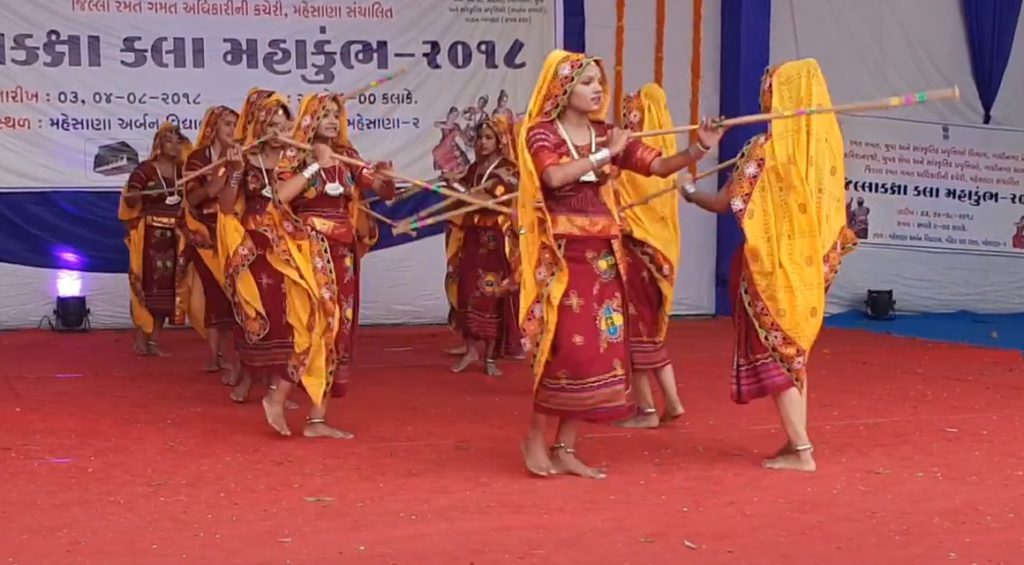
Timpani is a Gujarati dance genre that originated in Saurashtra’s Chorwad district. The dance evolved from an ancient technique of beating lime into a house’s foundation with a timpani, a long pole with a square wooden or iron block at one end.
Women established timpani dance to enjoy challenging and tedious tasks. The women form two lines, facing each other, singing and dancing to the rhythm of the timpani. During weddings and festivities, people perform this dance.. It’s one of Gujarat’s most unique folk dances.
Padhar
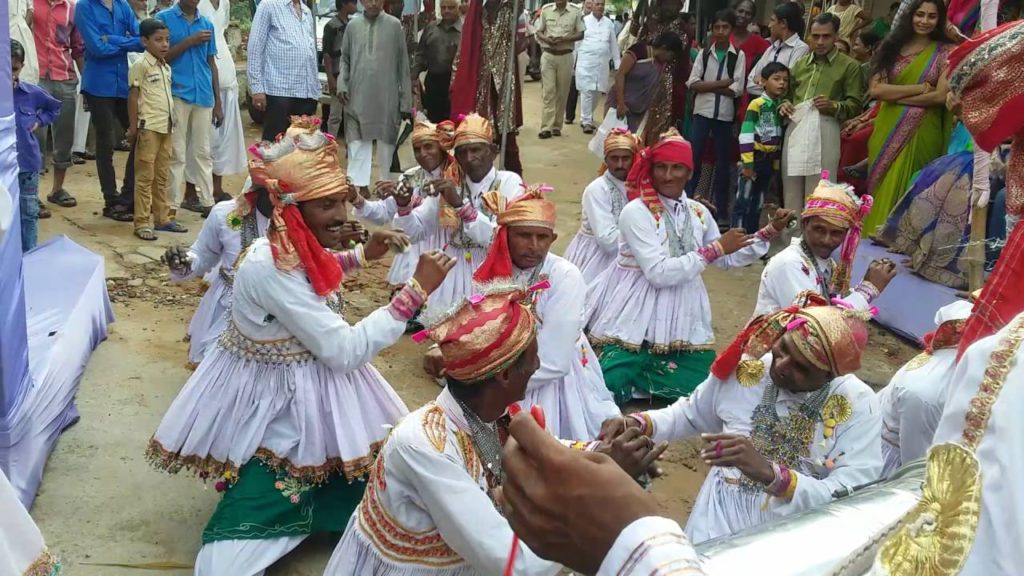
Another prominent traditional dance in Gujarat is the Padhar dance, which members of the Padhar community perform. Mostly Padhar people are fishermen who reside along the banks of the Bhal regions of Nal Sarovar. They are Hindu devotees who worship Goddess Durga in different forms.
The dancer imitates situations that occur in the lives of seamen while performing this dance. This dance style depicts the rising and falling of sea waves and the roaming nature of a mariner’s employment. The dancers dance while carrying little sticks and singing about water.
Hudo
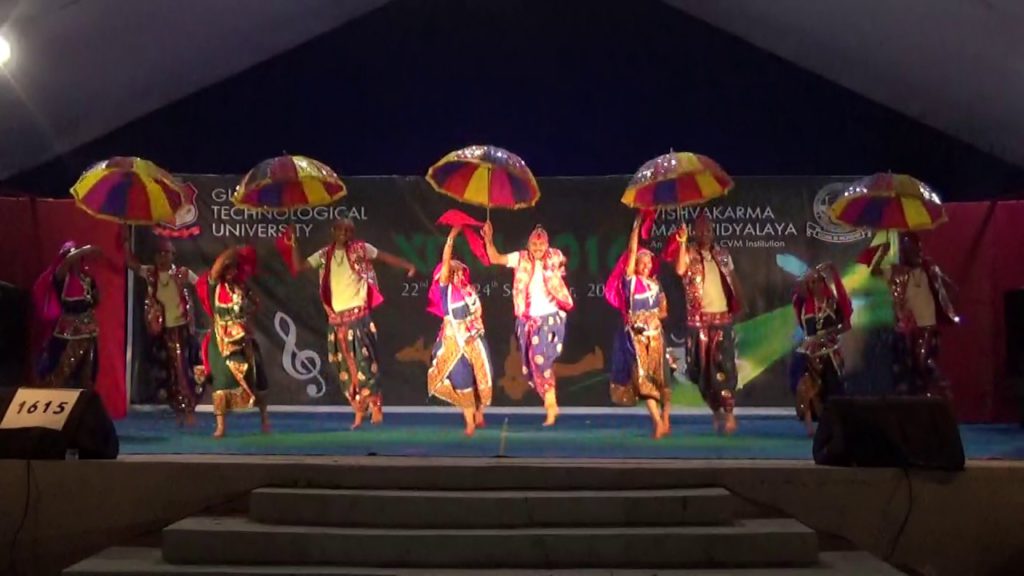
Hudo is a dance genre of the Bharwad Tribe, Gujarat’s shepherd group, and is another prominent folk dance. Sheep battles were the inspiration for the dance. This dancing style imitates the actions of two sheep banging their heads against one other.
Traditional musical instruments such as the dholak, harmonium, flute, kansi, joda, and manjira accompany the dancers as they clap their hands repeatedly and vigorously. Beautiful garments worn by the dancers increase the beauty of this dance which is famous in Gujarat’s Panchal district.
The presence of an umbrella with a gorgeous embroidered design and the excellent lace and mirror work is a unique feature of the outfit.
Conclusion
Each year Gujarat hosts several festivals and hence known as the “Land of Festivals”.These celebrations are usually accompanied by musical performances and traditional dance forms based on their rich history and traditions. As a result, Gujarati folk dances are not only popular in the western state, but also across the country.
Cultural dance is important since it is one of our ways to tell people about elements of our culture that they should be aware of. It is also a method for others to appreciate, learn about, and admire our traditions and practices. Allow people from various cultures to tell their experiences about their dances.
Share with your friends
